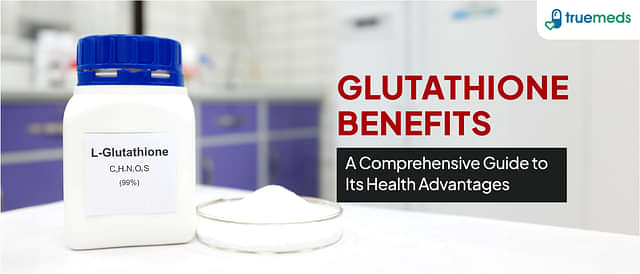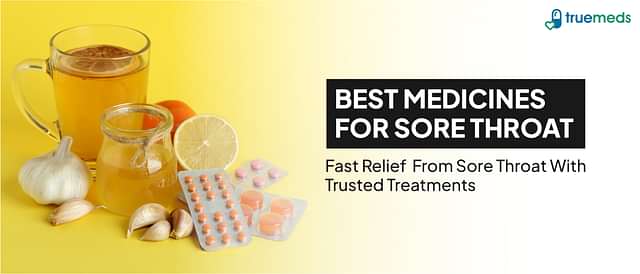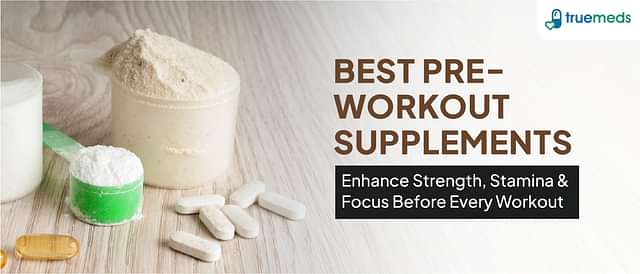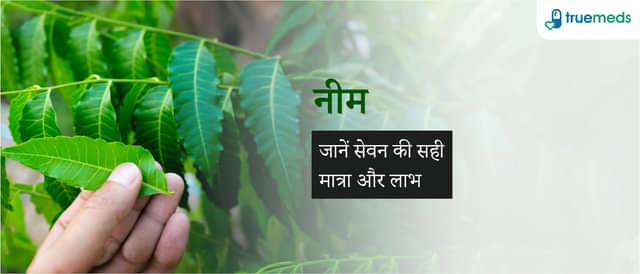Seborrheic Dermatitis: Overview, Causes and Symptoms
Last updated on : 26 Feb, 2025
Read time : 7 min
What is Seborrheic Dermatitis?
It is a common dermatological problem that affects the seborrheic areas of the body. “Seborrheic” stands for “Sebaceous glands” a small gland in the skin which secretes a lubricating oily matter (sebum), whereas “dermatitis” word is used to describe skin irritations and rashes. Seborrheic dermatitis symptoms affect the scalp, face, retro-auricular area, sides of the nose, eyelids, eyebrows and upper chest, creating red patches and oily scales on the skin, as well as white or yellow crusty or powdery flakes on the scalp.
Dermatitis disease affects about 11% of the population, it is common in men and women. It also affects newborns under three months old and adults between the ages of 30 and 60. You are more likely to develop this type of dermatitis if you were born with naturally oily skin.
Seborrheic Dermatitis Causes
Despite a significant incidence, the seborrheic dermatitis causes remain unknown. Several factors are responsible for causing dermatitis-like a combination of intrinsic and environmental variables, including sebum secretions, skin surface fungus colonisation, sometimes individual vulnerability and genetics. The yeast called Malassezia is present on everyone’s skin but it overgrows in some people. Some research has been tried to explain that increasing androgen and skin lipids levels may play an important role in causing dermatitis. Some other factors also trigger dermatitis disease like stress, using alcohol-based lotions.
The medical state of the person also plays a significant role in the development of dermatitis disease, especially when the patient has Acne, Depression, Epilepsy, HIV, Psoriasis, Parkinson’s disease, and Rosacea. Despite the existence of theories, true experts have yet to discover if food causes or alleviates dermatitis. Some research articles include Alcoholism as one of the factors causing disease. It usually appears on and around body folds, such as your navel, groyne, and armpit, as well as below the breasts and in skin folds surrounding the genitals. Seborrhoea is usually distributed symmetrically on the body.
Cradle cap affects babies as young as three months old, resulting in crusty yellow or brown scales on their heads. It normally goes away before kids are a year old, but it can reappear after they hit puberty. Despite the existence of theories, true specialists have yet to discover if food causes or eliminates dermatitis. When protein deficits and the eleventh gene mutation occur in an individual, it also seborrheic dermatitis causes. The majority of the genes are involved in either immune response or epidermal differentiation. Because this condition is more common in places with high sebum production, it is thought that oily skin is a contributing factor to dermatitis.
Also Read : Red Spots on Skin: Types, Causes, Symptoms & Treatments
Seborrheic Dermatitis Symptoms
The seborrheic dermatitis symptoms and features change with age. Adult dermatitis typically results in scaly spots on the skin. Although scaly patches frequently appear oily or damp, the skin beneath them develops crimson. Scales can flake off and turn yellowish to white. The distribution of these seborrheic dermatitis symptoms is frequently very helpful in making a diagnosis. The scalp, outer ear, and external auditory canal are usually implicated in adults, as are the forehead, brows, eyelids, cheeks close to the nose, including the folds that stretch from the nose to the sides of the mouth, and, less commonly, the armpits, mid-chest, and mid-back regions.
The seborrheic dermatitis symptoms develop a seborrheic dermatitis scalp eruption known as “cradle cap” in babies. It can sometimes be more severe and include the diaper area. The seborrheic dermatitis symptoms are cause a thicker layer of yellow, greasy scale covering the entire scalp. Slowly, the scales become yellow to brown and become flaky and easily rubbed off. Although the rash may be asymptomatic in both adults and children, it frequently causes itching, particularly on the scalp. In infants, dermatitis can appear on the face, most commonly on the eyelids, around the nose, or ears.
Diagnosis of Seborrheic Dermatitis
Seborrheic dermatitis symptoms are easily diagnosed by the affected skin’s appearance and location on the body. None of these is required. Unresponsive to treatment, your dermatologist may perform a skin biopsy to rule out other diseases.
Seborrheic Dermatitis Treatment
Seborrheic dermatitis symptoms can sometimes resolve on their own. However, it is frequently a lifelong condition that clears and flares. Good skincare can typically keep it under control. The type of seborrheic dermatitis treatment depends on the area of the body that is affected and how severe your condition is. The goal of Seborrheic dermatitis treatment is to minimise the itching and redness associated with dermatitis. So, consult the doctor, and the doctor will suggest you over-the-counter and prescription medications are used in Seborrheic dermatitis treatment. Topical antifungals, calcineurin inhibitors, and corticosteroids are among the prescription medications.
Also Read: Seborrheic Dermatitis Home Treatment
Scalp Treatment
Use dandruff shampoos with selenium, zinc pyridone, or coal tar twice a week for mild instances, and antifungal shampoos containing ciclopirox or ketoconazole for long-term control. For several weeks, these shampoos are used on a daily, twice-weekly, or three-times-weekly basis until the dandruff is gone. Shampoos containing betamethasone valerate clobetasol, fluocinolone, or fluocinolone solution are indicated for moderate to severe seborrheic dermatitis treatment. Some products are used every day, while others are used twice a week.
An infant’s cradle cap normally goes away on its own between the ages of eight and twelve months. It can be treated with mild baby shampoo daily. After each shampoo, massage or brush the scalp with a gentle brush many times a day. Take care not to break the skin. If the problem persists, or if the baby scratches his or her scalp, consult a paediatrician or dermatologist. He or she may advise you to use a prescription shampoo or lotion as seborrheic dermatitis treatment.
Face and Body
Topical antifungals, corticosteroids, and calcineurin inhibitors are some of the seborrheic dermatitis treatments of the face and body. Ciclopirox, ketoconazole, and sertaconazole are examples of topical antifungals. These creams, foams, and gels are normally administered twice daily for up to eight weeks and then as needed to the affected areas. Betamethasone valerate, desonide, fluocinolone, and hydrocortisone are examples of topical corticosteroids. These items are available in creams, lotions, foams, gels, ointments, oils, and solutions. They are normally taken once or twice a day.
This treatment may have side effects, especially if used for an extended period. Take your doctor’s recommendations. If your dermatitis somehow doesn’t improve, the skin becomes more and more painful, red, or edematous, or the abscess begins to drain, see your dermatologist. To alleviate your seborrheic dermatitis symptoms, they may prescribe a prescription ointment, shampoo, or antifungal medications.
How Can I Avoid Seborrheic Dermatitis?
Preventing seborrheic dermatitis symptoms is difficult. Cradle cap is a benign condition. It is easy to treat at home. Teenagers and adults with dermatitis are more prone to having high levels of androgens, lipids, or an overgrowth of the yeast that is always present on the skin’s surface.
Getting enough sleep, managing stress, and getting daily small doses (minutes) of sunshine can all help reduce your risk (UV light). Avoid the midday sun.
Always use medicated shampoos and skin products as directed by your doctor. Incorrect or inadequate treatment can cause flare-ups and repeat visits to your doctor.
For the all latest coupons and offers on the medicines, follow us on Instagram and Facebook.
Disclaimer
Our healthcare experts have carefully reviewed and compiled the information presented here to ensure accuracy and trustworthiness. It is important to note that this information serves as a general overview of the topic and is for informational purposes only. It is not intended to diagnose, prevent, or cure any health problem. This page does not establish a doctor-patient relationship, nor does it replace the advice or consultation of a registered medical practitioner. We recommend seeking guidance from your registered medical practitioner for any questions or concerns regarding your medical condition.
Popular Articles
Recommended Articles
Recent Articles
Top-Selling Medicines:
...View more
Top-Selling OTC:
...View more
Company
About UsHealth ArticleHealth StoriesDiseases & Health ConditionsAll MedicinesAll BrandsNeed HelpFAQSubscribe
Registered Office Address
Grievance Officer
Download Truemeds

Contact Us
Our customer representative team is available 7 days a week from 9 am - 9 pm.
v3.7.8
Our Payment Partners



























































